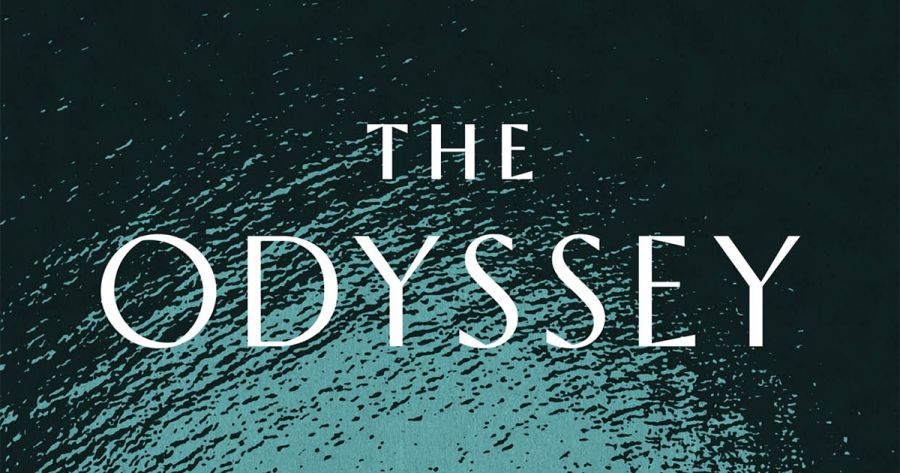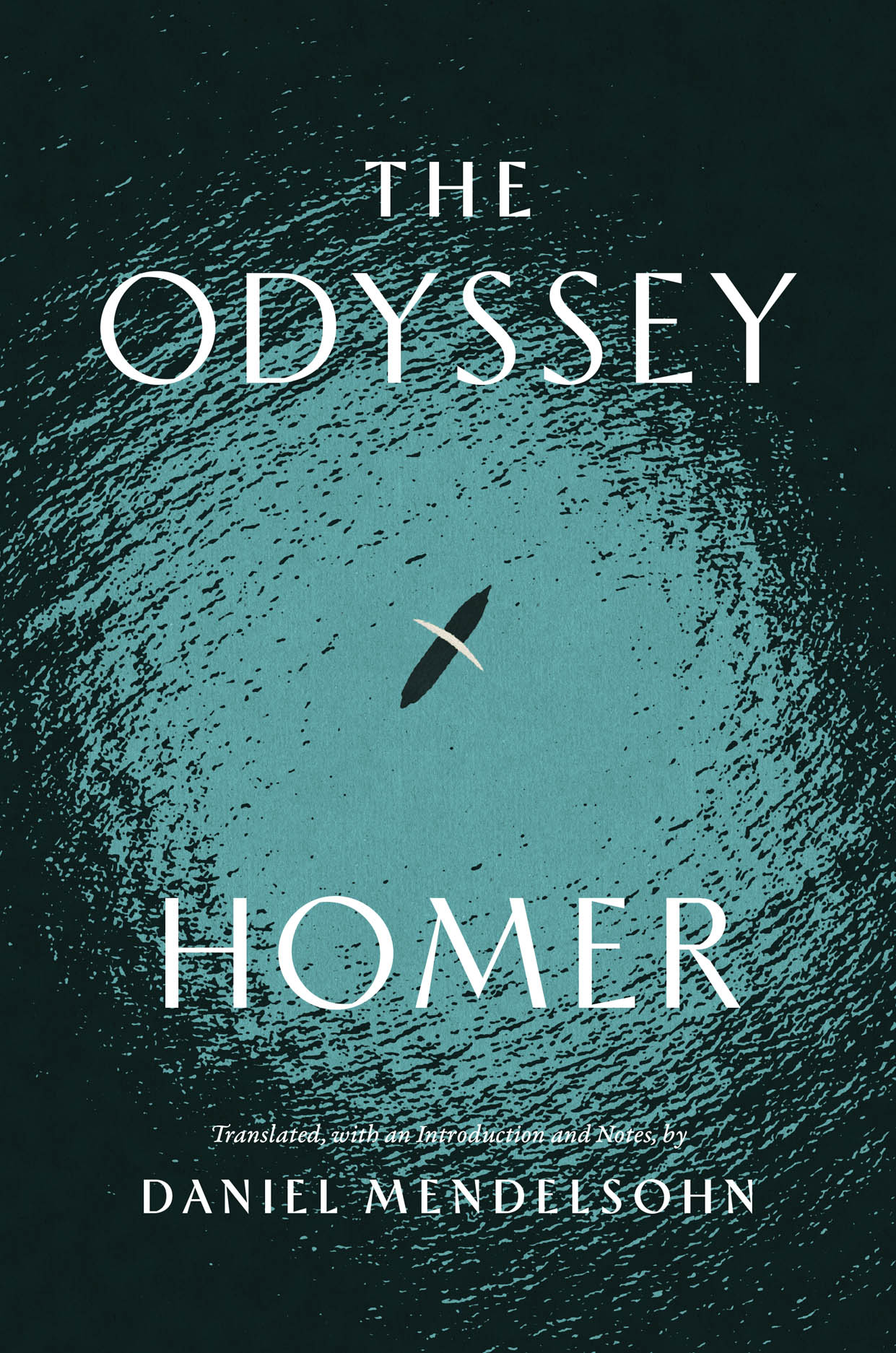
- Free Article: No
- Contents Category: Classics
- Review Article: Yes
- Article Title: Heading towards home
- Article Subtitle: A mesmerising guide to Odysseus’s world
- Online Only: No
- Custom Highlight Text:
After the horror of war, the difficulty of return – angry seas, lost comrades, plotters at home. Daniel Mendelsohn teaches at Bard College and writes for The New York Review of Books. His compelling new translation of the Odyssey acknowledges the themes of this story have been repeated over millennia: separation, trials, and reunion.
- Book 1 Title: The Odyssey
- Book 1 Biblio: University of Chicago Press, US$39 hb, 560 pp
- Book 1 Cover Small (400 x 600):

- Book 1 Cover (800 x 1200):

- Book 1 Readings Link: https://www.readings.com.au/product/9780241733585/the-odyssey--homer--2025--9780241733585#rac:jokjjzr6ly9m
Even the setting for the Odyssey can inspire. Alice Oswald’s Nobody: A hymn to the sea (2019) is a book-length poem mirroring the voyage through images of water, light, and exile. It is a sequel to Memorial (2011), her poem cataloguing all the violent deaths in the Iliad. More prosaic studies trace the many locations evoked in the story, or speculate on the identity of Homer. Mendelsohn’s own 2017 An Odyssey recounts teaching the epic while travelling through the Mediterranean with his father to better understand both the geography and the relationship between fathers and sons (a significant theme in Homer’s story).
We do not lack compelling translations of the Odyssey, but a new entry requires choices about how to render Homeric verse into contemporary language. This is immediately evident in Mendelsohn’s decision to express in full the often-compressed Greek syntax, so creating lines which read like prose. Many translators employ the English rhythm of iambic pentameter, but Mendelsohn prefers the original dactylic hexameter. He argues the case in an extended note. Tastes differ but, overall, the longer line length and greater variety of expression works well.
One consequence of this decision is to render some famous lines anew. No more ‘rosy-coloured dawns’ – Mendelsohn translates the Greek as ‘when morning-born Dawn touched the sky with her fingertips of rose’. Likewise, many familiar epitaphs for key characters are fresh, and most characters find themselves with original spelling. Odysseus and Penelope retain their customary names, but their son becomes Telémahkos, inhabiting the pages with Kalypso, Meneloas, and Kronídes. Mendelsohn has retained only names so well-known that they already inhabit our imagination. The inconsistency is at first disconcerting but fades as the narrative carries us forward.
And what a story it is, starting with a central character much discussed but not glimpsed until Book 5. The narrative unfolds in circles, switching often between events in Ithaka and the trials of long-suffering Odysseus, moving slowly through a parade of goddesses and monsters, swift drama and long tangents, yet always heading towards home. Here was a poet telling his audience about a world beyond their shores, the mysterious seas and islands, peoples and strange customs discovered by those who voyage.
At the core always is Odysseus the wanderer, elusive and long alone in a sea of troubles. He remains deeply restless, a trait which will endure. In the Underworld, the seer Teiresias predicts Odysseus will not be content back on Ithaka but will set out again in old age before dying far from the sea. This man of tricks and turns, suggested Alfred Tennyson, cannot help himself. Odysseus must ‘follow knowledge like a sinking star, / Beyond the utmost bound of human thought’.
 Daniel Mendelsohn, 2015 (Christianpasquale via Wikimedia Commons)
Daniel Mendelsohn, 2015 (Christianpasquale via Wikimedia Commons)
Alongside his translation, Mendelsohn provides an engaging introduction to the lost world evoked by Homer. The Illiad was supposedly written by a young Homer, gripped by the drama of conflict, with the more reflective Odyssey a product of Homer’s old age. Mendelsohn notes both continuities and differences between the epic cycles, such as the role played by the gods in human affairs. Mendelsohn moves quickly through the centuries of debate about authorship, citing modern agreement that the texts bear linguistic markers from many places and times. Here was an expanding Greek world of around 700 BCE, looking back on an already vanished Bronze Age, in which someone took the time to write down these widely circulated stories.
Themes from Mendelsohn’s introduction flow into the helpful endnotes. These allow the translator to explain and to speculate. So, for example, in Book 6 Odysseus is dumped by angry seas onto the tranquil and prosperous land of Phaiêkia, to be found by Nausikáa, the daughter of the ruling monarch. Homer has fun with a naked Odysseus appearing suddenly amid a gathering of young unmarried women, innocently frolicking while they wait for the washing to dry. It is a comic interlude, though with a serious point when Odysseus shares his understanding of a perfect marriage: a husband and wife ‘united by oneness of mind in their thinking’. We understand, again, his powerful need to be reunited with Penelope.
In an endnote, Mendelsohn notes an interesting aspect of this otherwise incidental account of Odysseus and Nausikáa. She is of her time and place – concerned about proprieties, obedient to the wishes of her mother and father, carefully chaperoned until marriage. Nausikáa and her attendants daringly remove their veils, but only when far from the male gaze. Such are the rigid conventions which shape the lives of so many in the narrative. Yet the Odyssey also contains powerful women who live outside such narrow limits: goddesses who turn men into swine, choose their partners, intervene in the affairs of humans. Mendelsohn speculates about ‘the epic’s overall interest in powerful females as key figures’ in the story of Odysseus’s return.
Taken together the notes and translated text, maps and glossaries offered by Mendelsohn provide a mesmerising guide to the world of Odysseus and Penelope. The core text is very readable, recognisable yet subtly different from previous translations. For nearly 3,000 years this saga of adventure and return has gripped audiences and obsessed scholars. The story is curiously modern in places. There is even a teenager asking her father to borrow the family vehicle for a drive to the beach. All mixed, though, with sudden shifts to shocking brutality, as when Telémahkos hangs disloyal servant girls with cable from a ship. ‘For a time their feet went on twitching; but not for very long.’ For all that is universal about this epic, there remains much unfathomable about Odysseus and his world. Heroes return, but they bring baggage.


Comments powered by CComment